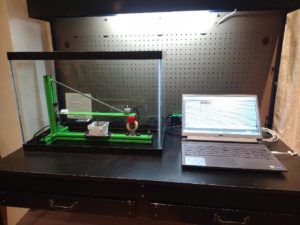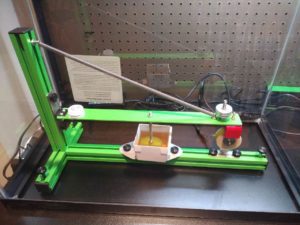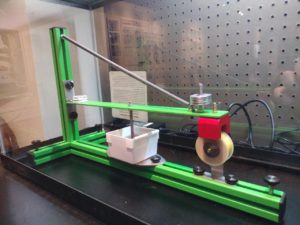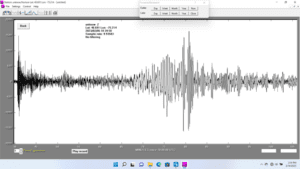In the early morning hours of February 6th 2023 a massive piece of the Earth’s crust about 30 miles long suddenly and violently moved about 11ft. This released enough energy to cause the surface of the Earth to shake so much it toppled buildings and destroyed infrastructure. Sadly thousands of people are known to have died as a result of this earthquake.
These movements occur on a daily basis as titanic forces build up along sections of the Earth’s surface that move into, alongside, and away from each other. Sections of independently moving pieces are called plates and their motions have sculpted the Earth as we see it. These slow gradual movements, punctuated by the occasional sudden slips, can ripple the landscapes we see into valleys and ocean trenches or thrust up great mountain chains. Although these movements are happening continually every day, occasionally a rare large movement occurs that results in a destructive earthquake.
The study of earthquakes is called seismology. A tool to observe and measure seismic activity called a seismometer can detect earthquake activity and can be used to produce a record of the activity called a seismogram.
In November of 2022 the Nurture Nature Center started collecting this kind of data with a seismometer of its own. You can see this seismometer on the third floor of the building in the Sphere room. The seismometer has detected and produced seismograms at a rate of about one event per month since it was installed. Each earthquake can be analyzed to estimate how far away the epicenter (the point on the earth’s surface right above the focus of the earthquake) of the activity was from a given location.
All the previous earthquakes we detected came from the west coast of the United States about 2,000 miles away. The larger the earthquake the easier it is to detect from greater distances. The earthquake that occurred in Turkey on February 6th was detected at our seismometer over 6,000 miles away in Easton. This is the farthest detection we have seen so far which gives an indication of how severe this disaster must have been in Turkey.
Our seismograph is meant to help teach visitors about these natural disasters and about the technology we use to study them. By studying this kind of data it is hoped that one day seismology will be able to predict when and where earthquakes will occur. Prediction can save lives by allowing people time to prepare or even evacuate at risk structures. Perhaps one day our ability to predict earthquakes will make these costly disasters less deadly with the help of painstaking data collection and the application of scientific research.
Seismometer set up at the Nurture Nature Center (in the Science Hall)
Initial earthquake
Seismogram of both the initial earthquake and the powerful aftershock
The powerful aftershock about 9 hours after the initial earthquake
Example of the analysis of seismic activity to determine the distance to the source of the activity










Well done! Important to understand how Science impacts our everyday lives.
☺️